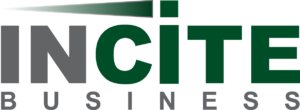The Struggle
As we live through our new reality brought onto us by the COVID-19 virus, we are finding ourselves wearing new hats and dealing with unprecedented challenges. Many of us are now working from home in hastily created “offices” that also function as video studios for our countless video conferences. We’re also helping our children deal with being cooped up at home away from their friends and trying to figure out this home-schooling thing. Some of us own businesses with employees that are relying on us to find unique ways to maintain revenue or tap into the promised federal assistance that continues to be just outside our collective grasp. How are we juggling all of these equally important things?
Life usually will throw one or two challenges at you and then give you a chance to recover your footing while prepare for the next one. We seem to be encountering wave after wave of challenges with no real understanding of when this will be over. And for me, that is one of the most frustrating things. When will we be back to normal? Ever? I’m thinking our new way of life, after we come out of this, will be much different. If you know me, I am a planner. Some may say an over-planner, but that’s how I’m wired. Without knowing how and when this will end, my ability to plan through it has been tested. I want to share a few things that continue to help me navigate these uncharted times and keep my level of stress down (but not gone).
Ration your news
This is an ideal opportunity to get overwhelmed with news and data. There are countless news conferences, blogs, tweets, etc. that are giving up-to-the-second updates on the pandemic. Early on I realized that I was over-indulging on this. I was getting so caught up that I was losing my perspective. There’s not a lot of positive messages being spread right now. Well, except for the health care community and the essential workers that are doing the much-needed, hard work. Thank you all for that! Recently, I started limiting how much I would read or watch on the pandemic and it really helped with my mood. I purposefully stay away from news for most of the day now and it has significantly helped my level of stress. I’m not sticking my head in the sand; I just decided my day is not going to be defined by news.
Communicate
It’s important to keep communicating with others. While the multiple work videos & teleconferences that happen every day are helpful, don’t forget to have personal conversations. Whether it’s with your family or friends, verbalizing your thoughts and fears of what we are going through can be incredibly helpful. Members of my family have started a journal to describe what is going on from their perspective during the pandemic. Not only will this be an interesting perspective to look back on, it can also be cathartic to express on paper what you are thinking and feeling internally. This is also a great time to reach out to those you know may be having a hard time dealing with this situation. Just the act of reaching out to them could make a significant difference in their life right now.
Exercise
Whether you exercised before this or not, getting out for a walk in the fresh air will do amazing things for your mindset. Walking through your neighborhood while the flowers are blooming and the birds are singing helps keep things positive. The other benefit is you may have a lot more flexibility in your schedule right now that would allow you to start that exercise regimen you’ve always thought about. This could be your New Year’s resolution do-over. This pandemic is going to be transformational – you can take the opportunity to make some positive transformations yourself. My wife and I have are taking walks together and today we went on our first kid-free bike ride in 10 years.
Just breath
As I mentioned before, I’m a planner. I love having a 6-12 month initiative that I can break down into smaller segments and then complete. I’ve had to adjust that strategy quite a bit. Instead of looking to something months away, I now focus on things one day at a time. I am keeping my time horizon shorter, but still break things down into small segments. Instead of weeks, I look at hours or even minutes. It’s also important to know that we will not be perfect in our new roles. Remember that we all handle adversity and stress differently. We need to be understanding and forgiving to each other as we adjust and potentially stumble (a lot) through this new normal.
We are all trying to arrive at the same place, hopefully soon.
